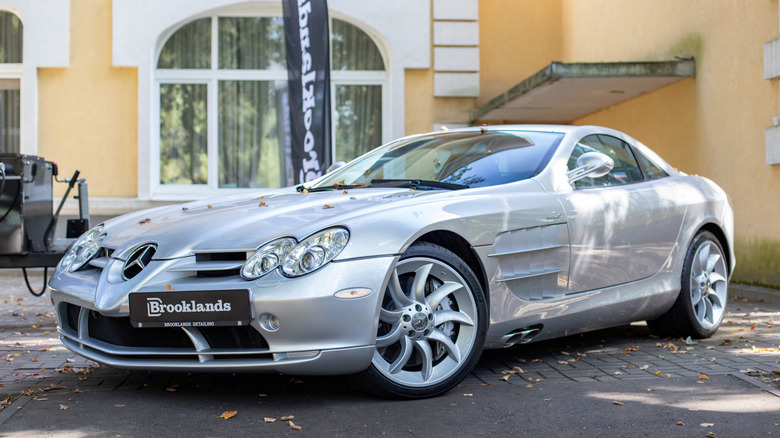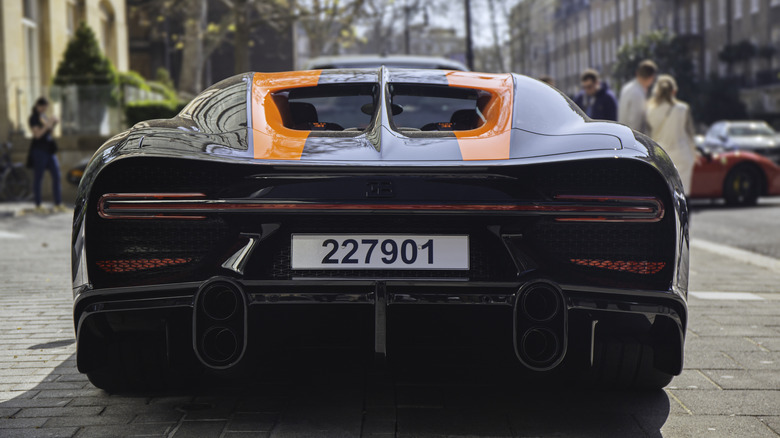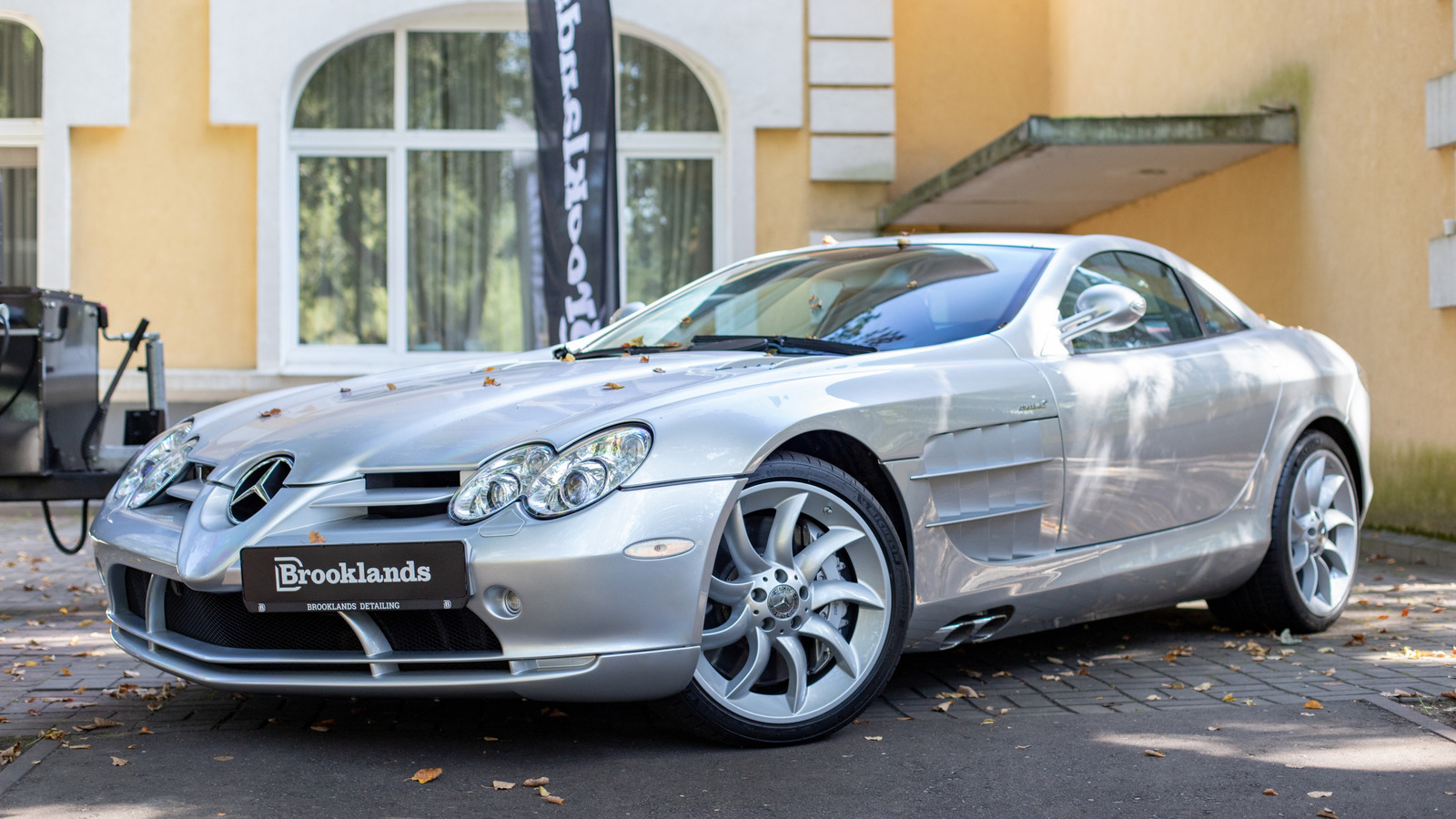 HOHLOVMIHAIL/Shutterstock
HOHLOVMIHAIL/Shutterstock
The car industry does not get enough credit for its creativity. While it is true that car makers are bound by rules and regulations for emissions and crash safety, much of the creative freedom of days past in the automotive world remains. The best examples of this creativity are when the designers and engineers have to compromise, and few areas demonstrate this better than a car's exhaust.
An exhaust system is crucial to a car's performance, and it must meet emissions standards to get the green light for production. But an exhaust is also one of the most soulful and artistic elements of a car. An exhaust creates personality and self-expression. An engineer may devise an exhaust that is efficient yet soulless, and a designer may imagine an exhaust so emotional that it would hinder performance. The compromise between each party's ideas is where the creative spirit shines, and where, sometimes, brands hit the jackpot. Here are five of the best-looking exhaust designs ever put on a factory car.
Lexus LFA
 JoshBryan/Shutterstock
JoshBryan/Shutterstock
The Lexus LFA is famous for many things. Its creators, obsessed with perfection, drove the project to its limits. The tumultuous gestation of the LFA proved to be wholly fruitful, and it has become a legend of modern Japanese carmaking. Its heart is a naturally aspirated V10 whose voice is brought to life by its exhaust system.
The upside-down triangle of tailpipes looks cool, but it's the philosophy that makes it legendary. Yamaha, famous for their expertly crafted concert pianos, was contracted by Lexus to build the LFA's exhaust system. Yamaha's goal was to craft an exhaust system that would create what they called an interactive loop between car and driver.
When crafting a musical instrument, Yamaha's philosophy was that it should respond to every subtle touch, giving the performer precise audible feedback so they enjoy their music to the fullest extent and adjust their inputs as needed. The exhaust system includes ducts that carry engine noise into the cabin, giving the driver the full tonal range of the LFA's song.
Koenigsegg Regera
 lev radin/Shutterstock
lev radin/Shutterstock
Christian Von Koenigsegg and his team of wizard-like engineers are known for their record-breaking cars. Koenigseggs are utilitarian in their own strange way, with the utility being a merciless and persistent chase instinct towards tunnel vision speed. In the brand's history, the Koenigsegg Regera was perhaps the only car that could welcome its driver as a desired companion rather than a necessary pilot.
The Regera is a touring car by Koenigsegg's standards, if you can accept a 1,500-horsepower hybrid spaceship as such. Not every inch of the car's exterior had to be optimized for brain-bending performance, allowing the Regera to deliver in a way previously unseen from the brand. Part of this creativity manifested in the car's exhaust system. Looking at the rear, most assume the oval opening in the center to be the exhaust, and they would be correct, sort of.
The opening does serve as an exhaust, but only for the heat coming from the car's hybrid systems. The real exhaust, the one that makes all the noise, is just next to it. Produced by Akrapovic, the Regera wears a pair of shark fin exhausts incorporated into the diffuser. Their thin openings allow them to do their job without interrupting the carefully crafted airflow from the underside of the car. It's a classic example of Koenigsegg's outside-the-box thinking.
Bugatti Chiron Super Sport
 Martyn Lucy/Getty Images
Martyn Lucy/Getty Images
There is perhaps only one brand that can be grouped with Koenigsegg as a proprietor of ultimate automotive greatness, and that brand is Bugatti. Before Koenigsegg was building its rocket-like cars, Bugatti was hurdling towards oblivion with the coveted Veyron, and in 2016, the Chiron replaced it. In 2019, it was time to chase the speed record again, and the chosen weapon was the newly released Chiron Super Sport. Bugatti succeeded and surpassed the supposedly unbreakable 300 mph barrier.
Powering the Chiron Super Sport was Bugatti's signature quad-turbo W16 engine, which produced a colossal 1,578 horsepower. The W16 needed an equally impressive exhaust system to expel the massive heat of such a powerful engine, and it birthed a new exhaust system that had to work in harmony with the diffuser.
The result was a configuration of four exhaust exit pipes, paired in stacks of two to keep the exiting underside air as smooth as possible. Each stack is encased in an oval of bodywork that smooths out the array and keeps the airflow clean. The pipes themselves are wide and thick, reminiscent of a cannon barrel or the afterburners on a military jet.
Mercedes-Benz SLR McLaren
 Alexandre Prevot/Shutterstock
Alexandre Prevot/Shutterstock
It is rare for two players in the industry to build something together, and rarer still for a joint effort to mix brand identities successfully. In 2003, this happened with the Mercedes-Benz SLR McLaren.
Outside, the car was sleek, like an aluminum raindrop turned on its side and placed on four wheels. Inside, the engine and much of the technicalities of its construction were left to McLaren, which is partially where the car's iconic looks come from. The engine was meant to be in front of the driver, but behind the front axle. This meant the hood of the car had to be stretched to a nearly absurd degree, granting it an unmistakable silhouette.
In tandem with the engine's mid-front mounting, the exhaust system's heft was kept in the center of the car, improving its weight distribution. The car was so long that getting the hot air from the engine all the way to the back was out of the question. The solution was side-mounted exhausts. Each side featured two flattened oval pipes just behind the front wheels rather than in front of the rear wheels, for even placing them that far would have been too uncomfortable a stretch. This kept the path from engine to air as short as possible, and granted the car an undeniable swagger.
Porsche 918 Spyder
 Just dance/Shutterstock
Just dance/Shutterstock
In 2013, a historic event occurred in the car world. Three of the world's most respected car makers produced a hybrid hypercar that would become the guiding light of their respective brands.
Porsche's entry into this holy trinity was the 918 Spyder. Porsche's best minds were allowed to run free, exempt from the usual limitations of building a production car. The 918 explored new ideas and perfected existing ones, but all that innovation would be nothing without a worthy engine. Following in the footsteps of the Carrera GT, the 918's engine was derived from one of Porsche's race cars. Where the GT received a V10 from a Le Mans racer that never raced, the 918 received a V8 from Porsche's RS Spyder, an LMP2 car.
The V8 produced 608 hp of the car's total 887 hp, and in a car where everything is optimized, the exhaust could be no exception. So, the engineers came to a top-pipe design, with exhaust exiting via two pipes just behind the driver's and passenger's heads. This was beneficial for many reasons. One was that the exhaust had less distance to travel, making for a more efficient expelling process. It also kept the bottom of the car clean, smoothed underside aerodynamics, and just looked plain cool.




